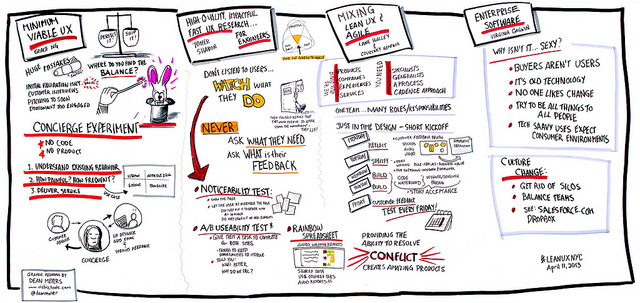In the world of design, where aesthetics and functionality converge, there exists a shadowy corner: dark patterns.
These are UI (user interface) and UX (user experience) design techniques crafted with manipulative intent, often tricking users into actions they would not knowingly take.
By exploiting cognitive biases and subtly guiding user behavior, dark patterns maximize short-term gains for companies—at the expense of user trust and ethics.
Understanding Dark Patterns
Dark patterns are intentionally deceptive practices embedded into interfaces to manipulate user behavior. They often result in users inadvertently sharing personal information, subscribing to services, or making unintended purchases. The impact extends beyond digital platforms, seeping into various industries where manipulation reaps profits.
A significant reason dark patterns are effective lies in their ability to exploit human psychology. By leveraging tendencies such as the path of least resistance or adhering to social norms, they influence decisions that might otherwise be avoided if users were fully informed.
Common Examples of Dark Patterns
Dark patterns manifest in numerous ways, some subtle, others glaringly obvious. Below are a few prominent examples:
1. Forced Continuity
When users sign up for a free trial, only to discover they’re automatically billed at the end without clear prior notice. Canceling these subscriptions is often deliberately complex.
2. Sneak into Basket
Products or services are added to a user’s shopping cart without their consent. A common example includes pre-selected checkboxes for add-ons or upgrades.
3. Misdirection
Using visually dominant design elements to guide users away from their intended action. For instance, making a “Cancel” button barely visible while highlighting “Accept” options.
4. Bait-and-Switch
Advertising one thing but delivering another. For example, clicking on a “Get Free Trial” button only to be led into a subscription.
5. Hidden Costs
Surprise fees that appear at the final stages of a transaction, often too late for users to reconsider their purchase.
6. Roach Motel
Making it exceedingly easy to sign up but incredibly difficult to unsubscribe or cancel. Think: services that require an email to sign up but a phone call to cancel.
7. Privacy Zuckering
Named after Facebook’s Mark Zuckerberg, this refers to tricking users into sharing more personal data than they’d typically want to. Often disguised as fun quizzes or social challenges.
Why Dark Patterns Persist
Despite widespread criticism, dark patterns persist because they work—at least in the short term. By exploiting user vulnerabilities, companies can:
- Boost revenues: Hidden fees, unwanted subscriptions, and forced upsells inflate profits.
- Increase engagement: Tactics like endless scrolls or disguised ads keep users glued to platforms.
- Gather data: Deceptive consent mechanisms lead users to share more personal information.
However, these practices come with a steep cost. Damaged reputations, eroded user trust, and potential regulatory penalties can overshadow short-term gains.
The Impact of Dark Patterns
Dark patterns often lead to tangible and intangible harm for users:
- Financial Loss: Unexpected charges or subscriptions can drain user funds.
- Privacy Violations: Deceptive data collection increases the risk of identity theft and fraud.
- Erosion of Trust: Once users realize they’ve been tricked, regaining their confidence becomes a herculean task.
Case Studies of Consequences
- Epic Games’ FTC Fine (2023): The makers of Fortnite were fined $520 million by the Federal Trade Commission (FTC) for using dark patterns to trick users into unwanted purchases and unauthorized charges on children’s accounts.
- Airlines’ Hidden Fees: Many airlines have faced backlash for adding “optional” services like seat selection or travel insurance to ticket purchases without user consent.
Regulatory Pushback
Governments and consumer advocacy groups are ramping up efforts to combat dark patterns. Notable initiatives include:
- The EU’s GDPR: Mandates clear, informed consent for data collection, curbing deceptive data practices.
- California’s CCPA: Grants users more control over their data and penalizes companies using dark patterns to obscure opt-out options.
- FTC Guidelines: Focused on transparency, these aim to protect consumers from misleading practices.
How to Avoid Dark Patterns as Designers
Ethical design isn’t just about compliance; it’s about respecting users. Here’s how designers can steer clear of dark patterns:
1. Prioritize Transparency
- Clearly disclose costs, terms, and conditions upfront.
- Use straightforward language instead of legal jargon.
2. Make Opting Out Easy
- Provide users with simple, accessible ways to cancel subscriptions or opt out of data collection.
3. Conduct Usability Testing
- Test designs with diverse user groups to ensure clarity and avoid inadvertent manipulation.
4. Embrace Ethical Guidelines
- Refer to frameworks like the Ethical Design Manifesto to prioritize user well-being.
Future of Dark Patterns
As user awareness grows and regulatory frameworks tighten, the prevalence of dark patterns may decline. Companies adopting ethical practices will likely see long-term benefits in user trust and loyalty.
To remain competitive, businesses should:
- Invest in ethical UX education for teams.
- Regularly audit their platforms for deceptive practices.
- Foster a culture of transparency and respect.
Final Thoughts
Dark patterns represent the darker side of design, exploiting user vulnerabilities for profit. While effective in the short term, they erode trust, invite regulatory scrutiny, and harm users. By embracing ethical design principles, businesses can foster loyalty, build sustainable relationships, and lead with integrity.
Further Reading:
- Dark Patterns at Scale: Findings from a Crawl of 11K Shopping Websites
- The Ethical Design Handbook
- FTC’s Fight Against Dark Patterns
- Dark Patterns – Types and Examples
- California Consumer Privacy Act (CCPA)
To continue learning about this topic, please check out these two posts “How To Convince Others Not To Use Dark Patterns” and “The Danger of Dark Patterns (With Infographic)“


